What Is Atherosclerosis?
Atherosclerosis, also known as arterial hardening, is a slow process where fat, calcium, and connective tissue build up inside the walls of the arteries. Over time, this buildup makes the vessels narrower and less flexible, restricting blood flow. The condition is very common, especially in older adults, and is one of the leading causes of heart and vascular diseases such as heart attack, stroke, and angina.
How Does Atherosclerosis Develop?
Atherosclerosis often begins early in life but develops gradually over decades.
When the inner lining of the arteries (the endothelium) is damaged — for example by high blood pressure, smoking, or high cholesterol — LDL cholesterol and other substances start to accumulate in the vessel wall.
This triggers an inflammatory response, causing immune cells to gather and form a plaque. Over time, the plaque grows and narrows the vessel.
As plaques progress, they may:
-
Reduce blood flow to vital organs
-
Rupture and cause a blood clot
-
Lead to tissue oxygen deprivation
Common Causes and Risk Factors
Several factors increase the risk of developing atherosclerosis:
-
High blood pressure
-
High cholesterol (especially LDL)
-
Smoking
-
Overweight and physical inactivity
-
Diets high in saturated fat and sugar
-
Family history of cardiovascular disease
Many of these risk factors can be managed through lifestyle changes, which makes prevention crucial.
Symptoms of Atherosclerosis
Atherosclerosis often develops silently over many years. Symptoms usually appear only when an artery becomes severely narrowed or blocked — and they depend on which arteries are affected:
| Affected area | Possible symptoms |
|---|---|
| Heart (coronary arteries) | Chest pain (angina), heart attack |
| Brain | Dizziness, speech problems, stroke |
| Legs | Pain while walking (peripheral artery disease) |
| Kidneys | High blood pressure, reduced kidney function |
Because the condition can progress unnoticed, regular monitoring of blood pressure, cholesterol, and blood sugar is important — especially after age 50.
The Link Between Atherosclerosis and Heart Disease
Atherosclerosis is the underlying cause of nearly all cardiovascular diseases.
When a plaque ruptures, a blood clot can form and block blood flow entirely.
This can lead to:
-
Heart attack: blockage of blood flow to the heart muscle
-
Stroke: blockage of blood flow to the brain
-
Angina: temporary chest pain due to reduced oxygen supply
-
Peripheral artery disease: impaired circulation in the legs and feet
Preventing and treating atherosclerosis is therefore essential to reducing the risk of serious heart and vascular complications.
Prevention and Treatment
Treatment focuses on slowing down the progression of atherosclerosis and reducing the risk of clots and related diseases.
| Measure | Effect |
|---|---|
| Quit smoking | Protects vessel walls and improves circulation. |
| Exercise regularly | Improves blood flow and lowers cholesterol. |
| Eat a heart-healthy diet | More fruits, vegetables, whole grains, and healthy fats. |
| Monitor blood pressure and cholesterol | Early detection helps prevent damage. |
| Medication | Statins, blood pressure medication, and blood thinners reduce risk of heart attack and stroke. |
When to Seek Medical Advice
Contact your doctor if you experience chest pain, dizziness, numbness, pain when walking, or other signs of poor circulation.
Regular check-ups can detect atherosclerosis early — even before symptoms appear.
Safety alarm with automatic fall alarm can increase safety for people with an increased risk of falling
Sensorem’s personal alarm is an example of a technical aid specially developed for people who have an increased risk of falling. The personal alarm can automatically trigger the alarm in the event of a fall and then call relatives using the watch’s built-in speakerphone with two-way communication. The personal alarm works outdoors and has built-in GPS positioning so that relatives can see the user’s position on a map in the Sensorem app.
READ ABOUT HOW SENSOREM’S PERSONAL ALARM AUTOMATICALLY CAN DETECT A FALL
Sources:
- 1177 Vårdguiden: Atherosclerosis and Arterial Hardening
- Swedish Heart-Lung Foundation: Atherosclerosis – Causes and Treatment
- Swedish National Board of Health and Welfare: National Guidelines for Cardiovascular Care
- European Heart Journal: Atherosclerosis and Cardiovascular Disease (2023)
- American Heart Association: What Is Atherosclerosis?

